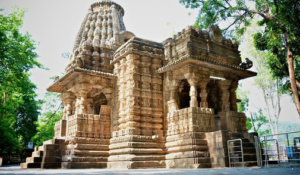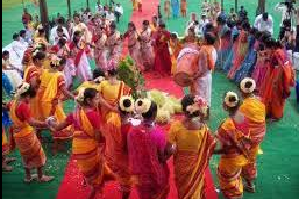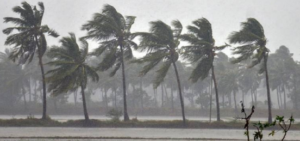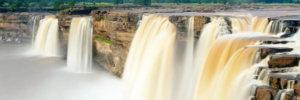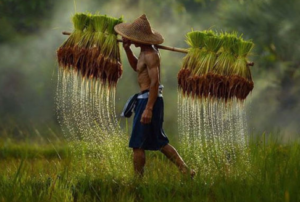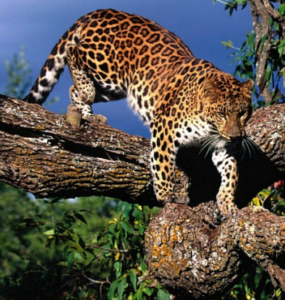Chhattisgarh
Architecture & History
- Kosala is the old name of Chhattisgarh region. The name Chhattisgarh, meaning “thirty-six forts,” was formerly applied to the territory of the Haihaya dynasty of Ratanpur.
- Houses of Chhattisgarh are mostly courtyard houses.
- The house has an open courtyard having verandahs and rooms on three or four sides. Courtyard and verandah offer a wide range of thermal comfort.
- Chhattisgarh was under Maratha rule (Bhonsales of Nagpur).
- With the rise of the Chhattisgarh, the region came under British rule.
Demographic Location
- Chhattisgarh, state of east-central India. The state has state borders with the Indian states of Uttar Pradesh and Jharkhand to the north and northeast, Odisha to the east, Telangana to the south, and Maharashtra and Madhya Pradesh to the west.
- The State capital is Raipur.
- Chitrakot Waterfall originates on the Indravati River, near Jagdalpur in Chhattisgarh.
- Chhattisgarh is located in the upper Mahanadi River basin. It is a structural plain with topographic variations resulting from extensive wearing away of the earth by weathering and erosion.
- Knolls are areas between adjacent watercourses, and valleys flanked by belts of clayey soils found in this region. Chhattisgarh is surrounded by the Chota Nagpur plateau to the north, the Maikala Range to the west, the hills of Raigarh to the northeast, the Raipur upland to the southeast, and the Bastar plateau to the south.
- These highlands is full of erosional plateau forms reaching heights in the Maikala Range and the Dandakaranya hills.
- Chhattisgarh is mineral-rich. The state has major reserves of coal, iron ore, limestone, bauxite, and dolomite, tin, manganese ore, gold, and copper.
- Deposits of diamonds have been discovered near Raipur.
- Main hydroelectric projects are situated in the Ban Sagar damh, and the Harked dam over the Mahanadi River. The Hasdeo Bango hydroelectric power project is near Korba.
- Mahanadi is one of the most important rivers of the South Asian peninsula that originates from a village near Raipur.
- Mahanadi flows toward the east and enters Odisha, emptying its water into the Bay of Bengal. Other rivers that drain Chhattisgarh are the Indravati, Arpa, and Pairi.
- Various types of soils are found in the state. The black, clayey soils and the red-to-yellow soils is found in several places.
People, Rituals and Language
- The people of Chhattisgarh’s practice Hinduism widely, but there are some minorities of Muslims, Jains, Christians, and Buddhists.
- There also is a small community of Sikhs.
- Chhattisgarhi is the most widely spoken language, followed by Hindi; both are official languages of the stateMany of the Gond speak Gondi. Marathi, Urdu, Oriya, Gujarati, and Punjabi are spoken by significant numbers.
Climate
- The climate in Chhattisgarh depends on the monsoon.
- Seasons are summer which is hot, dry, and windy, with high temperatures. Winters are usually pleasant and dry.
- In December and January there is considerable rainfall over the northern part of the state, although the state as a whole receives most of its rain during the southwest monsoon.
Culture & Education
- Almost three-fourths of Chhattisgarh’s population lives in rural areas. The urban population of Chhattisgarh lives mainly around the city of Raipur and Bilaspur in the state.
- Chhattisgarh is a state with rich cultural heritage. The State has a very unique and vibrant culture.
- There are over 35 big and small colorful tribes living in the region. The rhythmic folk music, dances and dramas are a treat to watch.
- Panthi Dance is one of the most significant forms of folk dance in this area. It is a famous ceremony of the Satnami community of Chhattisgarh.
- Bastar Dussehra is the main festival of Chhattisgarh. people celebrate the festival with great pomp and enthusiasm.
- Chhattisgarh is the top region by literacy rate in the region. literacy rate in Chhattisgarh stands as 86.4 %.
- In Chhattisgarh there isone Central university, thirteen state universities and eleven private universities.
Famous Spots
- Chitrakot Waterfall. also named as Niagra falls of India
- Barnawapara Wildlife Sanctuary
- Bhoramdeo Temple
- Raipur City
- Sirpur Heritage Site,
- Rajim
- Maitri Bagh
- Dongargarh
Aqualife, Flora & Fauna
- The eastern and southeastern lands of Chhattisgarh are filled by moist deciduous plant life, often degenerating into scrub.
- The most valuable hardwoods are teak and sal. A type of tree called salai yields a resin used for incense and medicine, while leaves from tendu trees are used for rolling Indian cigarettes.
- Bamboo is abundant and is harvested for many purposes.
- The forests are home to animals, like tigers, striped hyenas, and blackbucks. Other species include the chital, gaur (wild buffalo), sambar deer, sloth bear, wild boar, and four-horned antelope, among others.
- The woodlands are also inhabited by many species of birds. Chhattisgarh has a number of national parks and many wildlife sanctuaries. The Indravati National Park contains a wildlife sanctuary for tigers.
- Almost half of Chhattisgarh’s land is farmland, while most of the remaining land is under forest cover.
- The state is often called the country’s rice bowl, the central lowland plain supplies grain to hundreds of rice mills. Maize and millet dominate the highlands. Cotton and oilseeds are the important commercial crops of the region.
- Livestock and poultry farming also are prominent. The state’s livestock are cows, buffalo, goats, sheep, and pigs.

